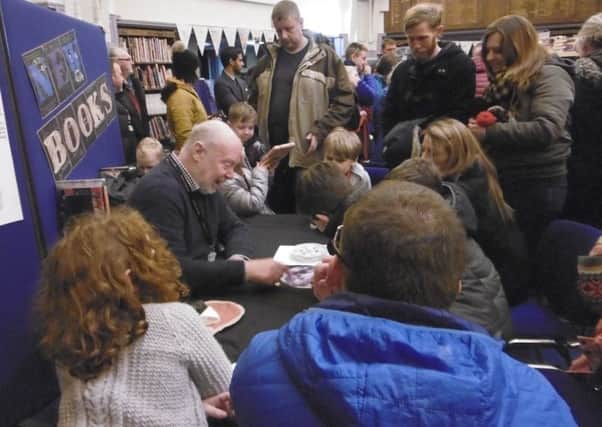Moon rocks and meteorites land at New Mills School


These rare samples were provided free of charge by the UK’s Science and Technology Facilities Council (STFC).
The classroom sessions for year 7, 8 and GCSE Astronomy students were led by Dr Nigel Marshall who teaches the GCSE Astronomy at New Mills School.
Advertisement
Hide AdAdvertisement
Hide AdThe sessions culminated in a successful and busy moon watch evening where GCSE astronomy students at the school invited primary School children and their parents for a space themed evening of activities.
More than 250 pupils and their parents were given the unique opportunity to actually touch a piece of space rock not of this Earth as they were allowed to handle some genuine meteorites.
The pack provided by STFC includes a 1.2 billion-year-old piece of Mars rock and a 4.3 billion-year-old nickel meteorite. It is unlikely that students will ever get the chance to hold anobject older than this, as Earth itself was formed 4.6 billion years ago.
The lunar samples were collected in the late 1960s and early 1970s during some of NASA’s first manned space missions to the Moon. During these missions, a staggering 382kg of material was brought back to Earth – mostly for use by scientists, but small quantities are used to develop educational packs like this one.
Advertisement
Hide AdHead of science Lorna Barnfather said, “We are so pleased that so many people came along to participate in this event. Samples like these can tell us a great deal about the planets from which they originate, but there is still much to learn – and we hope these kind of experiences will encourage students to become the next generation of astronomers.”
Advertisement
Hide AdSTFC’s cief executive officer, Dr Brian Bowsher, said: “We are thrilled to be able to offer this unique opportunity to young people.
“It is not often they will be able to see close-up, and actually touch, such important fragments of science history.
“Samples like these are vital in teaching us more about our solar system, allowing us to turn theories into fact.
“We hope this experience will encourage the students to take up a career in science.”
STFC is the only authorised source to loan lunar samples to educational and scientific organisations in the UK.